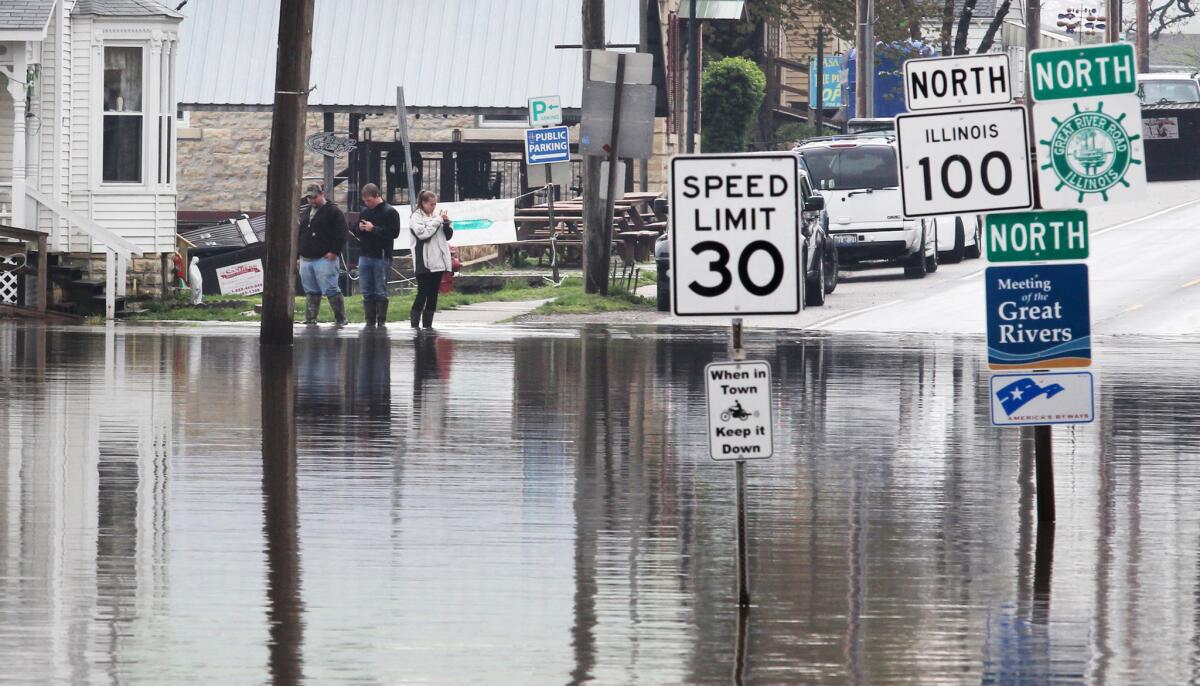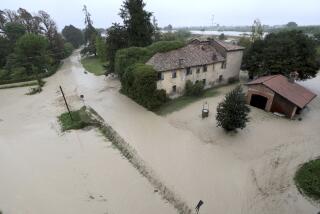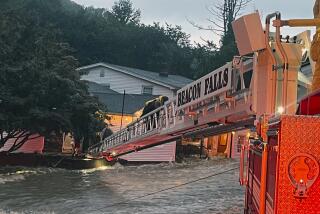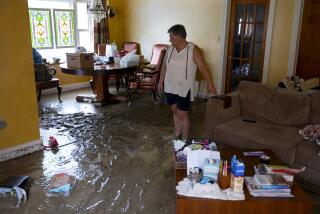Midwest states continue to fight record flooding

After months of drought, many areas of the Midwest on Saturday continued to fight off flooding from rising rivers that are not expected to crest for several more days.
National Weather Service forecasters expect flooding to continue throughout the week along the Des Plaines, Fox, Illinois and other rivers and their tributaries in Illinois. U.S. Geological Survey monitors in the area have recorded record floods.
Illinois Gov. Pat Quinn has declared 48 counties in his state disaster areas.
In making the announcement, he noted that water is receding in some areas but rising in others.
“We are continuing to do everything we can to provide the personnel and resources needed to fight the flooding,” Quinn said.
Ottawa, Ill., a city of about 18,700 people, sits alongside the Fox and Illinois rivers, about 80 miles southwest of Chicago.
Despite its location, Ottawa escaped some of the flooding that affected other areas in Illinois earlier this week, when several inches of rain fell in just a couple of days.
“We had some basements flooded, but we were better than a lot of other places,” said Capt. Buck Manley of the Ottawa Fire Department.
He credited a levee system built in the early 1980s with saving the city from what was predicted to be significant flooding; water has entered hundreds of homes in other cities.
“The water levels got within a foot and a half or two feet from going over the levees -- and those levees are 25 feet high,” Manley said. “We were fortunate.”
Central Illinois farmers, however, may not have been so lucky. In some places, the water may have carried away some topsoil and, along with it, fertilizer applied in anticipation of the spring planting.
The flooding has hit areas parched by last summer’s drought. “They needed the moisture, but they didn’t need it in two days,” Manley said.
Near St. Louis, the swollen Mississippi River caused more than 100 barges to break loose from their moorings.
In Fargo, N.D., streets along the Red River were shut down so a temporary levee could be constructed to hold back rising waters. More than 1.1 million sandbags were filled, according to updates on the city’s website, and President Obama ordered that disaster relief be made available to the area.
As of late Saturday, the river water was at 26½ feet, well above the 18-foot flood stage. National Weather Service forecasters expect the river to crest at near-record highs of 38 to 39 feet as snowpack melts with warmer spring temperatures.
Earlier this week, residents in Grand Rapids, Mich., had to evacuate after the Grand River reached record-high levels. Water levels peaked Monday and have dropped about six feet since, according to the National Weather Service.
ALSO:
Mississippi man arrested in poison letter case
Landing gear part believed to be from 9/11 jet found in N.Y.
Supreme Court Justice Stephen Breyer hospitalized after bicycle crash
More to Read
Sign up for Essential California
The most important California stories and recommendations in your inbox every morning.
You may occasionally receive promotional content from the Los Angeles Times.









